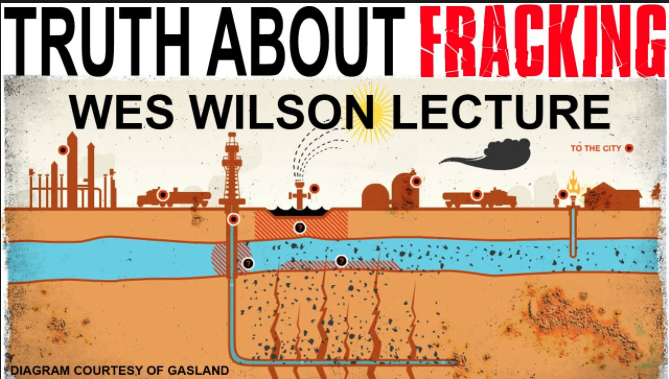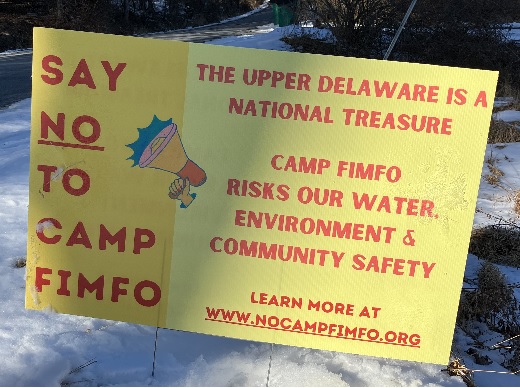FERC Will NOT Overrule NY's Denial for Constitution Pipeline Permit
January 14, 2018
NYC Sues Oil Companies Over Climate Change
January 16, 2018By Justin Mikulka, DeSmogBlog, January 10, 2018
Today New York Mayor Bill De Blasio announced a goal to divest New York City’s pension funds from fossil fuel reserve owners within five years. This makes New York the first major American city to announce such a move.
According to a statement, the city’s five pension funds have approximately $5 billion invested in over 190 fossil fuel companies.
“New York City is standing up for future generations by becoming the first major U.S. city to divest our pension funds from fossil fuels,” said Mayor de Blasio. “At the same time, we’re bringing the fight against climate change straight to the fossil fuel companies that knew about its effects and intentionally misled the public to protect their profits.”
Mayor de Blasio explained how the city was “bringing the fight” when he also announced the city will be suing the five largest investor-owned fossil fuel companies — BP, Chevron, ConocoPhillips, Exxon Mobil, and Royal Dutch Shell — and seeking damages for the money the city will have to spend to protect itself against the impacts of climate change.
This is in addition to separate legal action by New York Attorney General Eric Schneiderman to hold the industry accountable for misleading the public about climate change. Schneiderman’s lawsuit against ExxonMobil claims that there is evidence that Exxon had “two sets of numbers” used to discuss the impact of climate change on the company — one set for the public and one for private company conversations.
Climate activist and author Bill McKibben hailed the announcement. “They should light up the Empire State Building in green tonight — for the money the city is going to save, and for the planet it will help protect in the process,” he said in a New York Daily News op-ed.
“Climate change is perhaps the toughest challenge New York City will face in the coming decades,” de Blasio said in today’s statement.
Protecting the Island City
With this divestment decision and lawsuit, New York City is placing itself at the forefront of the fight against climate change. Which makes sense because New York, a city surrounded by water, is on the frontline when it comes to climate change impacts as well, from sea level rise to intense storms. And for a city the size of New York, dealing with climate change will not be cheap.
A New York Times article this week describes efforts to redraw the city’s flood maps, noting, “With its 520 miles of coastline and thousands of acres of waterfront development, New York has more residents living in high-risk flood zones than any other city in the country.” In 2012 Superstorm Sandy hit New York and surrounding areas, and the resulting roughly $70 billion in storm damages made it the second-costliest weather disaster in U.S. history, second only to Hurricane Katrina. Approximately $19 billion of those damages were in New York City alone, according to the New York City Office of Management and Budget.
This week the city administration also acknowledged that while $20 billion has been budgeted to deal with the coming impacts of climate change — that will only be a first step. New York City will continue to deal with the risks of storms like 2012’s Sandy as well as the inevitable impacts of sea level rise, and solutions, even if successful, will be very costly.
Various proposals to protect NYC from the ocean’s rise have been floated, and none are cheap. Ideas include building a string of barrier islands from New Jersey to Long Island and simply building a wall around lower Manhattan.
New York avoided the recent flooding that Boston experienced in the first major storm of 2018. Still, Boston experienced its highest tide in 100 years during this storm, showing what may await other coastal cities. New models say that storms will cause major flooding in New York City every five years.
And models that predict sea level rise show that drastic measures will have to be enacted to protect the city from the ocean.
Who Will Pay for It?
A day before New York’s announcement, Jack Gerard, CEO of the American Petroleum Institute, gave his annual address on the state of the oil industry, and there was a noticeable shift in the message when it came to climate change.
“I think we’re at the point where we need to get over the conversation of who believes and who doesn’t, and move to a conversation about solutions,” Gerard said, referring to climate change.
Even the head of the oil and gas industry’s largest lobbying group publicly says that climate change is real and he wants to discuss solutions. Of course, one solution, pointed out by scientists, is to greatly reduce the amount of carbon humans release into the atmosphere by leaving fossil fuels in the ground, which might minimize future costs and damages.
However, enough greenhouse gases have already been emitted to lock in a significant level of global warming and related changes to Earth’s systems. Cities like New York are now facing the very costly consequences of global inaction to reduce climate change. API likely realizes that when it comes time to pay the bill for climate change, many will ask oil companies and other major polluters to cover the cost, which is probably not the solution Gerard is looking for.
Which is also probably one reason API is working to influence judges in America, as The Center for Public Integrity reported in 2017. As damages due to climate change continue to stack up, more lawsuits against the deep-pocketed companies who are at least partially responsible will likely also be on the rise.
“The costs to address climate damages and prepare for future impacts are enormous and growing,” said Peter Frumhoff, director of science and policy and chief climate scientist at the Union of Concerned Scientists. “Taxpayers and impacted communities are right to demand that major fossil fuel companies, which have knowingly made the situation worse, pay their fair share.”
New York City is taking historic steps to address the very real dangers of climate change because when you are the mayor of a city surrounded by water like Mayor de Blasio, there is one thing you can bank on.
“The next storm is out there — it’s not a matter of if, but when,” de Blasio said.
More intense and frequent storms will come and the sea will rise. The question remains who will pay for the damage.




